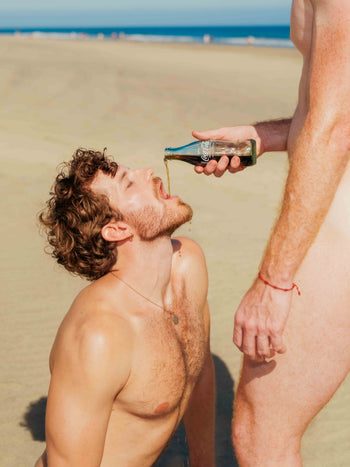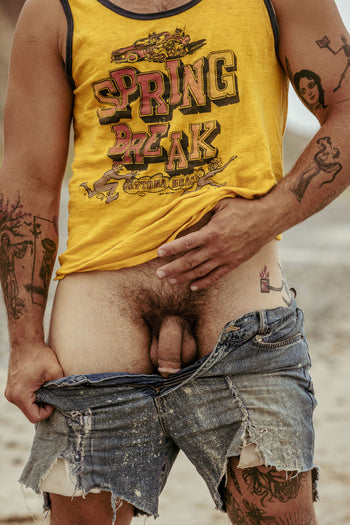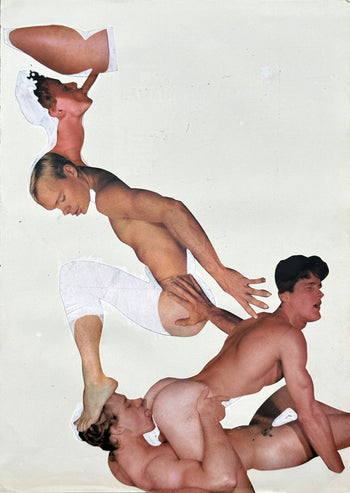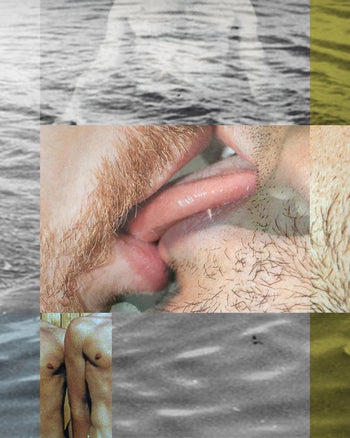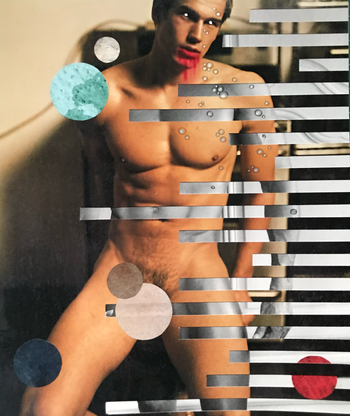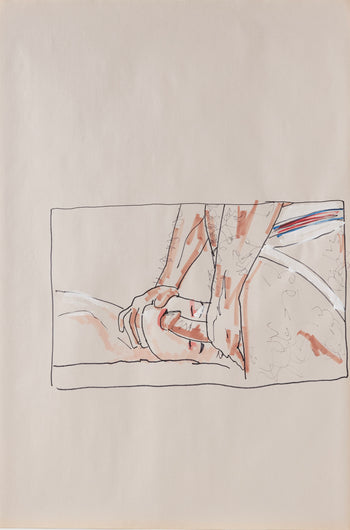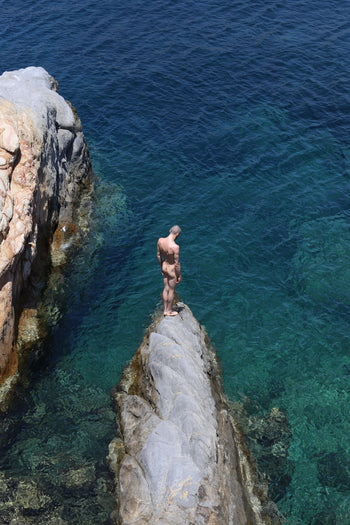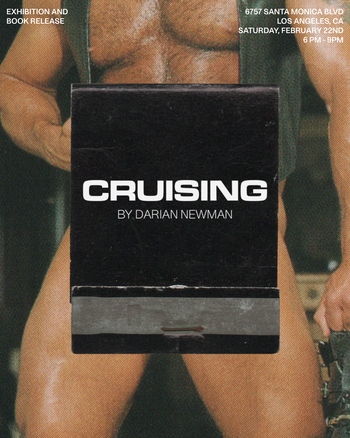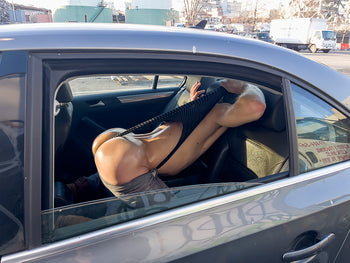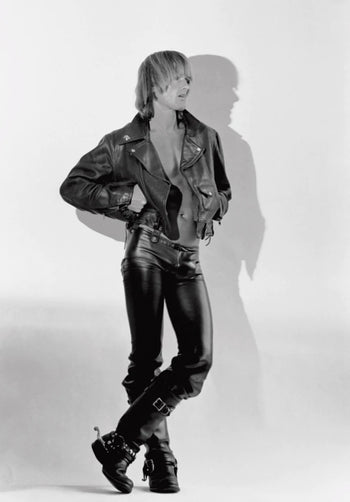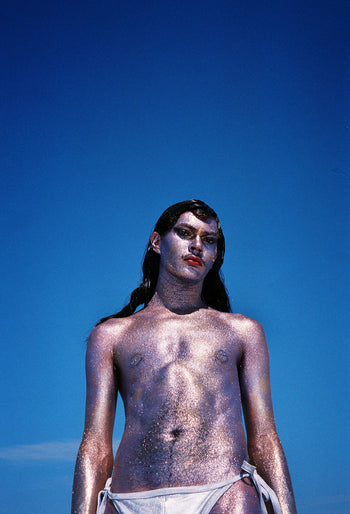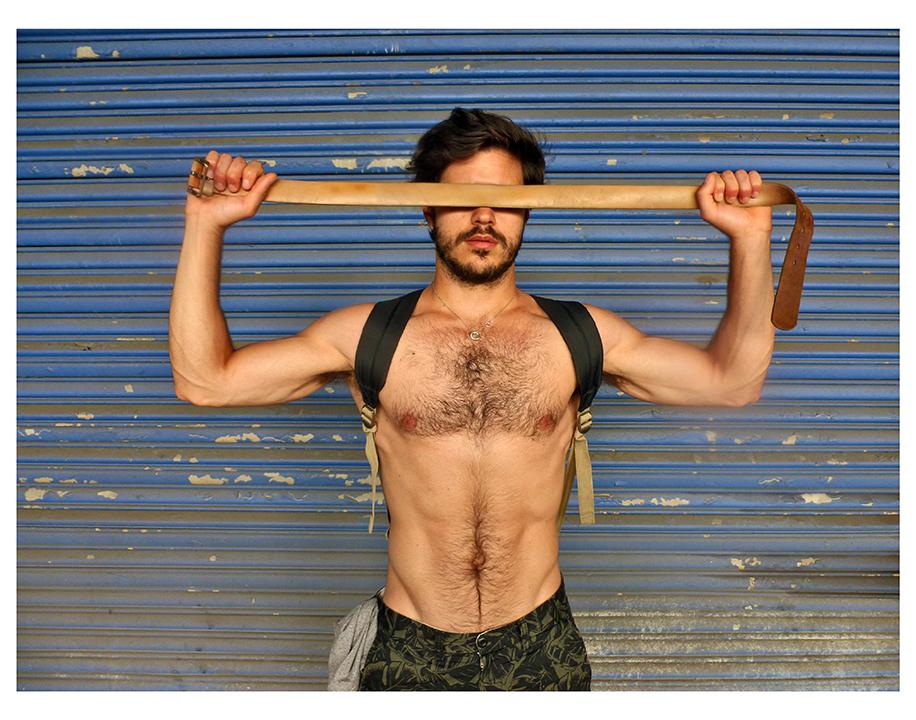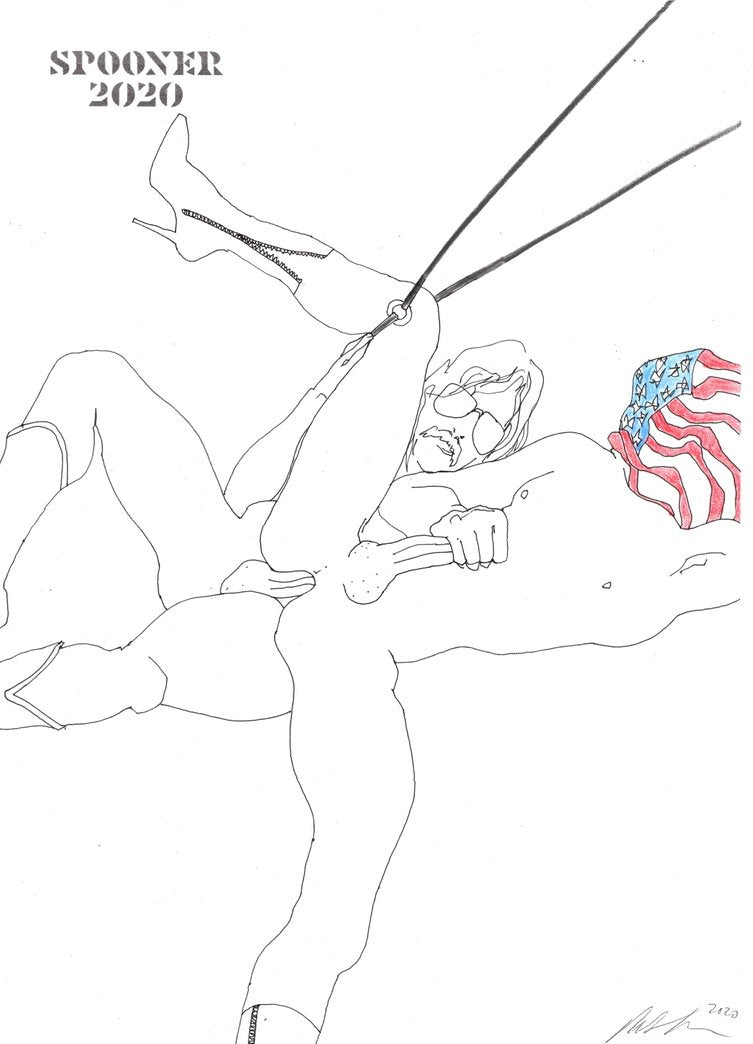Can you tell me a little bit about your online exhibition, XXX Files, presented by the Tom of Finland Store?
This show is a survey of my work from different series and books covering nearly two decades. Some images have been censored on various social media platforms, while others have never been published before. There are over 70 images and a dozen of videos created in collaboration with international and intergenerational team of fellow artists, including Bruce LaBruce, Gio Black Peter, Brian Kenny, François Sagat, Matthieu Charneau, Katya Zamolodchikova and Susanne Oberbeck of No Bra. I want to point out to the fact that this exhibition represents several generations of talents, from teenagers all the way back to the pioneers of queer culture like Edmund White.
Can you tell me about your reason to make these photographs available through the Tom of Finland Store? What relationship do you have to Tom's life and work?
I’ve always admired Tom’s work ever since I discovered it as a teenager in Russia. All queer imagery was banned in Russia up until mid-90s and before the Internet finding and sharing queer art wasn’t easy or safe. Forbidden fruit is always the sweetest, and Tom was one of the first creators and champions of modern queer aesthetics, which I found totally inspiring and empowering. In my work, I celebrate queer body and sexuality, and I was very honored to receive the Tom of Finland Foundation award for artistic achievement. So this whole project with ToF store happened very organically and it felt like a perfect fit for my art.


Your work typically documents queer men and those who live on the margins of society. How do the images in this exhibition reflect this artistic aim?
I’ve been always interested in subcultures and people that challenge the mainstream status quo, existing moral norms and stereotypes and ideals of beauty and sensuality. I see my work as a sort of Molotov cocktail of art, fetish and fashion, I’m always pushing the boundaries of different genres and mediums. My first book Lost Boys was banned in several countries because of nudity with animals and pictures of gay skinheads urinating on each other. I recently did a music video with 78-year-old Edmund White and 18-year-old Russian porn star Lev Ivankov—60-year age gap between the two—based on a scene from Warhol’s movie My Hustler, and it was equally transformative for both of them. I made my dear friend Bruce LaBruce sing for the first time, while being urinated on. I shot a music video with Susanne Oberbeck while cruising at the Hempstead Heath park in London, where George Michael was arrested for sex in public, or “dogging” as they say in England… My point is, an artist should never bend for the societal or moral norms but question, challenge and defy them.
I’m interested in the real human stories behind the images. Can you tell us more about the men that appear in this exhibition?
I mostly work with friends or people already familiar with my work, as I don’t like to direct or impose anything on my subjects. My creative process is about collaboration in a very broad sense—it’s about trust, compassion and understanding. The subjects of my work come from very different walks of life and I learnt something from each and every person that helped me to create these images or moving pictures, from Russian soldiers, German skinheads and New York’s go-go boys to artists and intellectuals. I’m interested in personalities just as much as different archetypes, I’m trying to examine and dissect the very notions of what it means to be a man in the modern world.

How does your queer immigrant experience inform your photographs? How has this perspective evolved in the midst of today’s anti-immigrant wave?
Being an immigrant gives you a different perspective on fundamental issues such as identity and disaffection, pride and shame, religion and nihilism, love and hate. We’re the new young blood that this country so desperately needs, we’re the spine of this culture, and we’re here to stay, despite all the distractive and hateful efforts from bigots and trumps.
So much of your work is motivated by an imperative to resist homophobia and censorship. In a time in which dissent has gone mainstream, have you had to rethink your strategies of opposition?
I don’t think it’s any easier to be a dissident now than when I first started out as an artist and activist. The issues of censorship and homophobia are just as important now as they were 25 years ago, with nearly 80 countries around the world where homosexuality is still illegal or semi-legal. In most of the Arab world homosexuality is punishable by death. In Russia the life of queer community is way more difficult now than when I was forced into exile. When people say that we live in the bubble, I say it’s the only bubble we have and if we don’t fight for this bubble, we’ll be swept away by the conservative forces in the US and around the world that still consider homosexuality a deadly sin.


Your have been a lifelong activist. What issues are you focusing on today?
As long as organized religion, homophobia and censorship exist, we have a long way to go in terms of universal rights and acceptance. Nowadays the US government employs the same xenophobic and homophobic tactics as the Russian government. At the time when people are so fatigued and disillusioned about politics and politicians, it’s up to artists to lead the dialogue with other countries and cultures. I believe in cultural diplomacy, I believe in building bridges not walls.
What are you working on next?
I’m working on several book projects, including a bilingual book of poetry and a collection of my journalism covering over 20 years. I’m also preparing for my spring solo show in Berlin and developing a couple of recording and video projects.


